During this busy time of year, one of our favorite things is to reflect on all the releases from the last 12 months. This year has been full of new articles, stories we’ve rediscovered, and unique needlework. We have our favorites, the features that delighted us as we shared them on the team. And you, all our readers, had your favorites from this year, too.
Here they are, the top most-visited articles that captured your fancy in 2023. We hope you enjoy looking back and revisiting these gems!
10. Margaret Stove, New Zealand’s Lacemaker to Royalty
 Margaret’s unique method involves washing wool lock by lock, fanning out the tip end in her hand, and using a very light touch as she spins with a worsted draw. Photo courtesy of Edward Field
Margaret’s unique method involves washing wool lock by lock, fanning out the tip end in her hand, and using a very light touch as she spins with a worsted draw. Photo courtesy of Edward Field
Margaret Stove has taught spinners worldwide how to wash and spin ultrafine wool. But outside the spinning community, she may be best known as the designer of the shawls that were New Zealand’s gifts to Prince William and his oldest son, Prince George. In 1982, she created the Bush Bouquet Shawl (her first full design!) for the royal baby. Read the full article.
9. Turning My Grandmother’s Doilies into Quilts
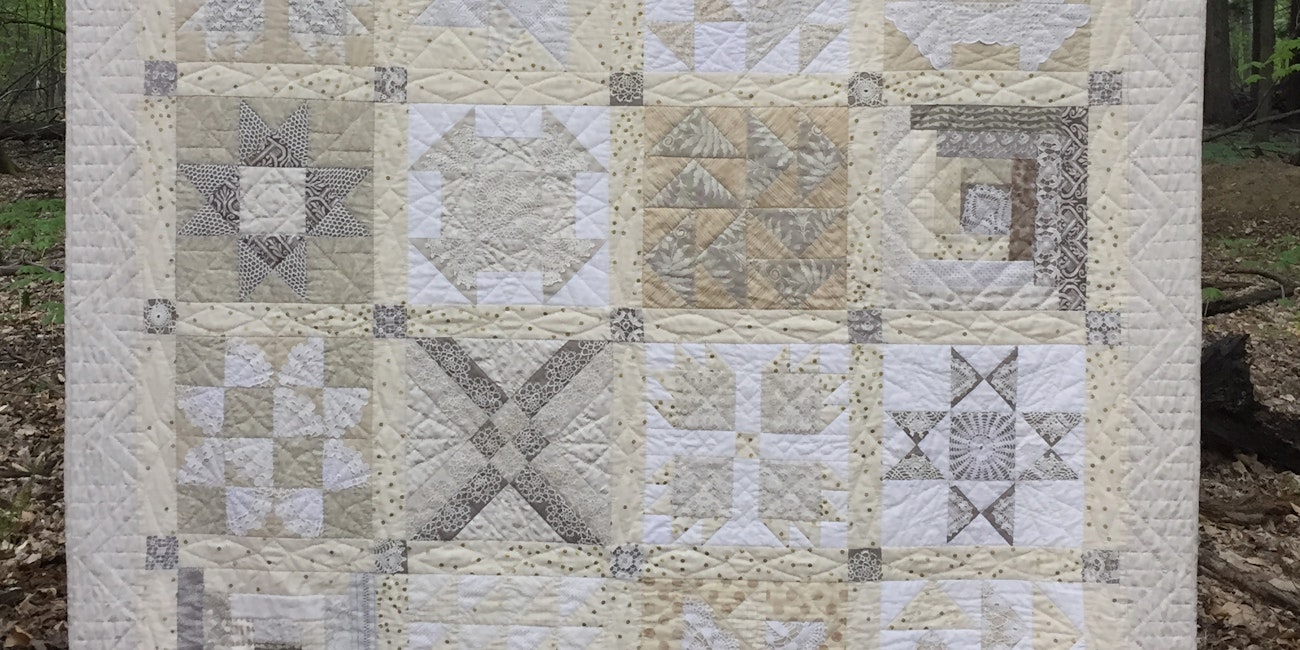 The quilt Christine made from her grandmother’s doilies. Photo by Christine Weisenburger
The quilt Christine made from her grandmother’s doilies. Photo by Christine Weisenburger
Decades after acquiring doilies from her grandmother’s collection, Christine Weisenburger unearthed them from the back of a linen closet. Though her doilies were obsolete in terms of practical use, she felt compelled to preserve the time-honored skill and craftsmanship of the women who made them. After much deliberation, she decided to preserve the work of her ancestors in a quilt. Read the full article.
8. A Vintage Baby’s Bonnet to Knit
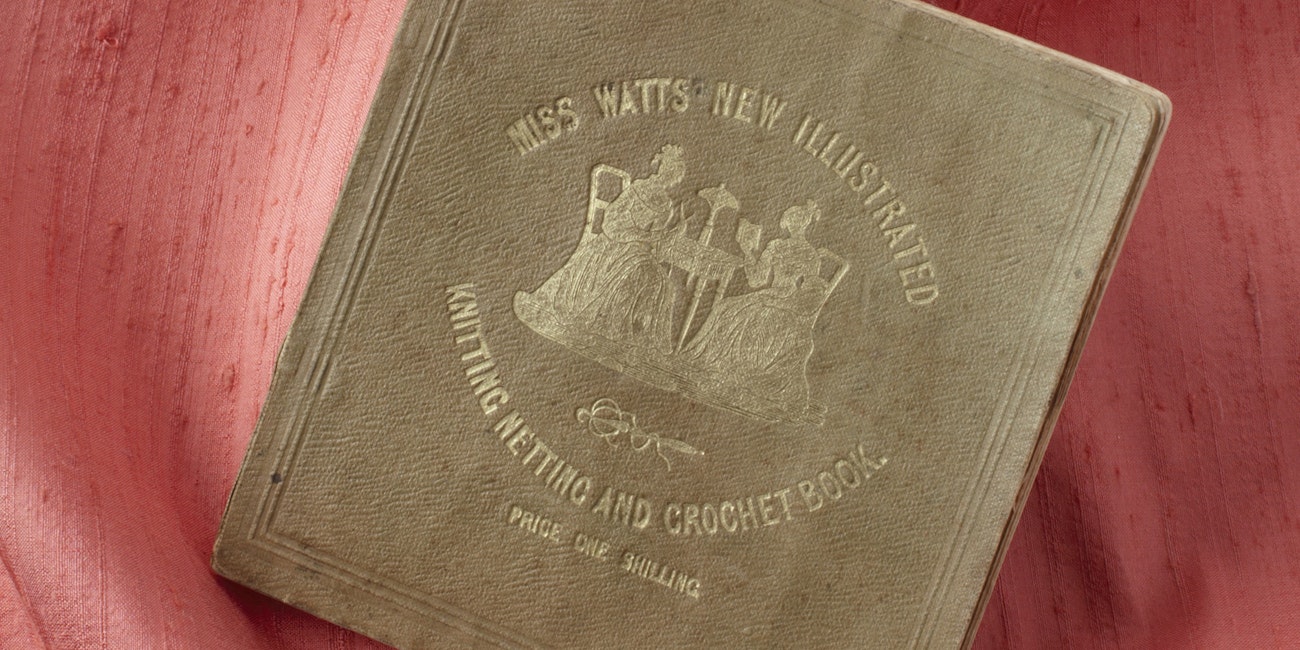 A rare find in the PieceWork library, this book on knitting, netting, and crochet is from the elusive Miss Watts.
A rare find in the PieceWork library, this book on knitting, netting, and crochet is from the elusive Miss Watts.
One of the joys of being a part of PieceWork is digging into vintage materials. These older patterns almost speak a different language and leave many things open to the judgement or interpretation of the knitter. This offering from Miss Watts’s elusive book on knitting, netting, and crochet is for a baby’s bonnet that includes a unique way to knit a feather trim. Read the full article.
7. How to Display (Most) Textiles Without Damage, Part 1
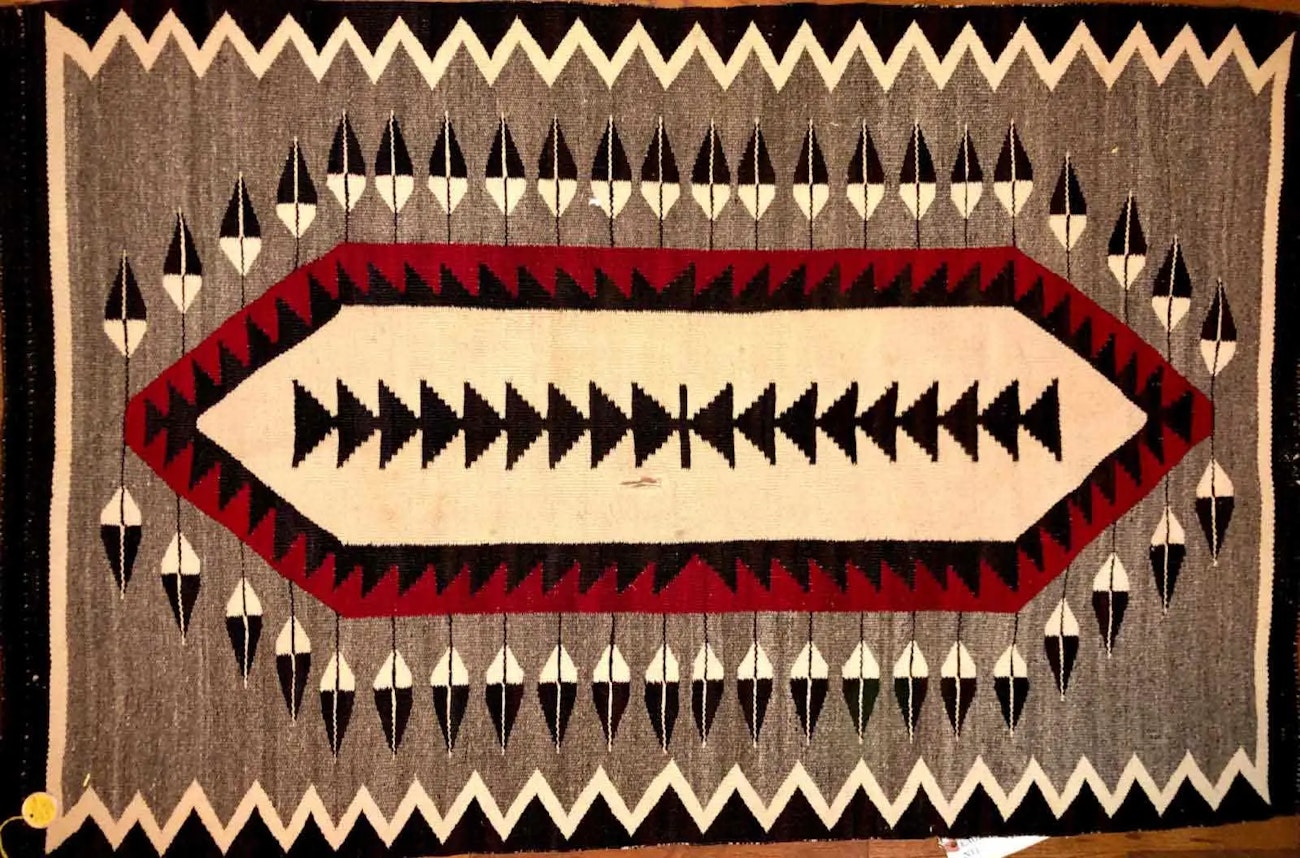 Navajo rug. Circa 1930s. Photo by Shawn Salley
Navajo rug. Circa 1930s. Photo by Shawn Salley
For centuries and probably millennia, humans have used cloth to decorate the walls of their homes. Today, most people hang cloth for aesthetic reasons, and if you’re a textile lover, you might have a nice selection of antique and global textiles on display around your house. While no one method works perfectly for every textile, there are some good options and guidelines you can follow to keep your textiles safe while on display. Read the full article.
6. Tvåändsstickning: Sweden’s Two-End Knitting
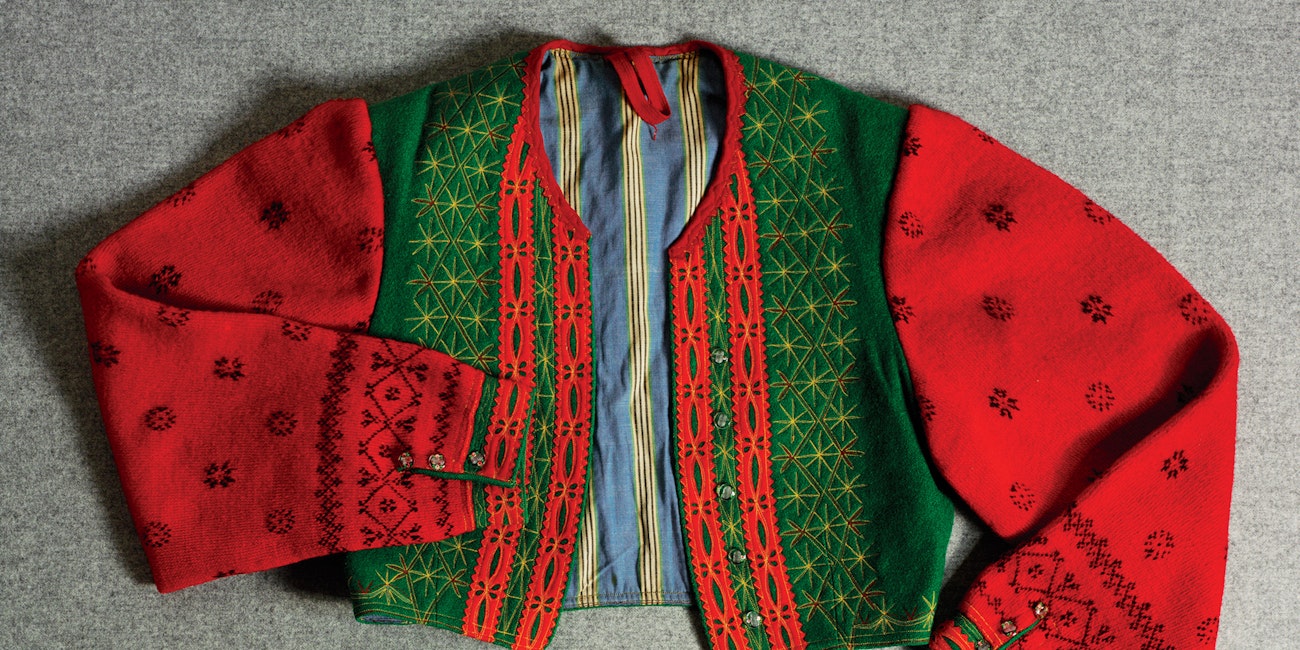 Woman’s waistcoat. Two-end knitted sleeves. Wool. Gagnef, Dalarna, Sweden. Early twentieth century. Collection of Beth Brown-Reinsel. Photo by Joe Coca
Woman’s waistcoat. Two-end knitted sleeves. Wool. Gagnef, Dalarna, Sweden. Early twentieth century. Collection of Beth Brown-Reinsel. Photo by Joe Coca
The traditional knitting technique of tvåändsstickning (two-end knitting, also called twined knitting) has been practiced since at least the middle of the seventeenth century in Dalarna and other rural provinces where there was a need for functional, warm winter clothing. The resulting fabric is perfect for the Scandinavian climate—it is dense, warm, sturdy, somewhat waterproof, and doesn’t lose its shape when wet. Read the full article.
5. The Eleonora Project, Part 7: The Death of Eleonora, as Told by Her Gown
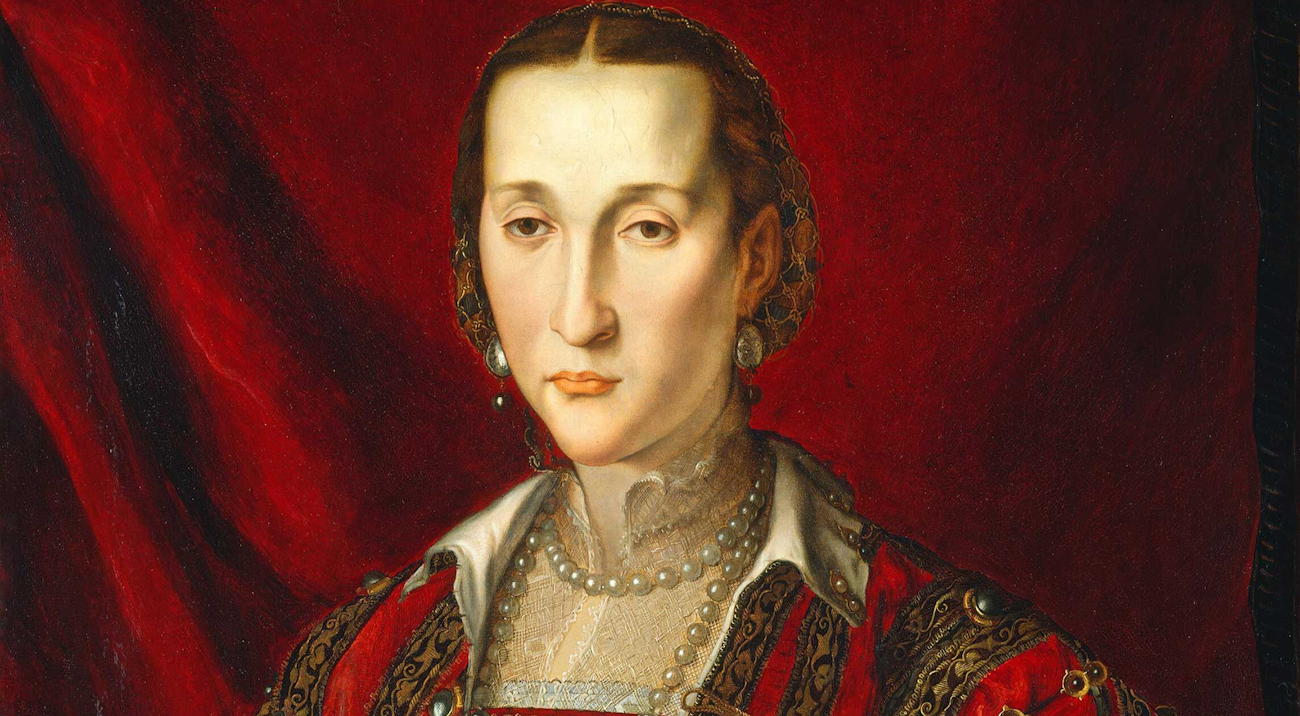 Eleonora di Toledo, c. 1560, by Agnolo Bronzino, is the last portrait of Eleonora painted during her life; it shows how ill she was. Courtesy of the National Gallery of Art, Samuel H. Kress Collection
Eleonora di Toledo, c. 1560, by Agnolo Bronzino, is the last portrait of Eleonora painted during her life; it shows how ill she was. Courtesy of the National Gallery of Art, Samuel H. Kress Collection
Sheena Pennell has been on a mission to re-create and adapt several pieces of Eleonora di Toledo’s wardrobe using a combination of modern technology and historical practices. In part seven of the series, she examines the clothing Eleonora di Toledo was buried in and what it reveals about her later years and death. Read part 7 of the Eleonora Project or the rest of the series here.
4. Needle Tatting: An Almost Hidden Art
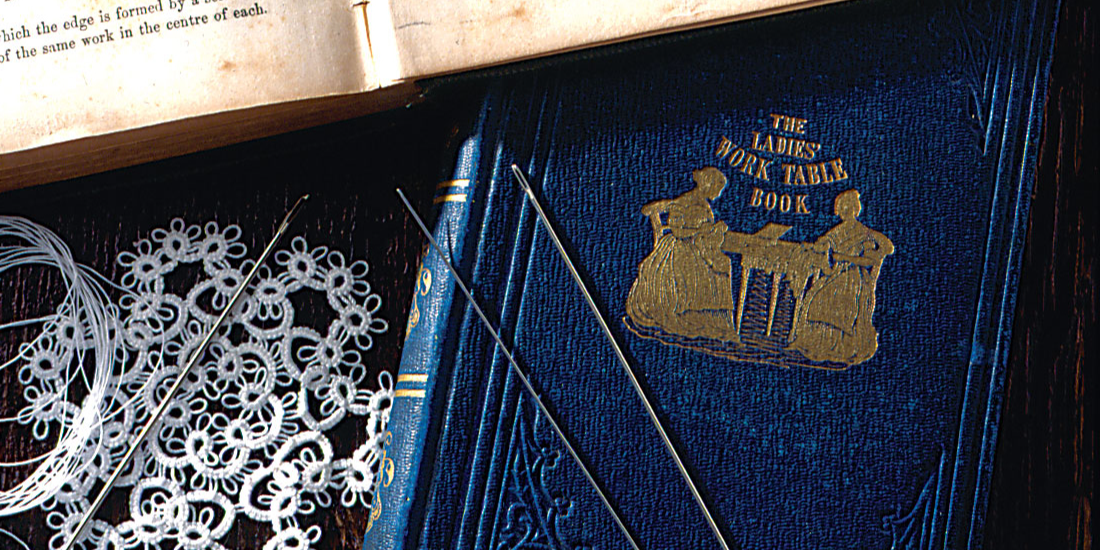 The Ladies’ Work-Table Book (1843) and The Ladies’ Handbook of Fancy and Ornamental Work (1861). Photo by Joe Coca
The Ladies’ Work-Table Book (1843) and The Ladies’ Handbook of Fancy and Ornamental Work (1861). Photo by Joe Coca
The difference between shuttle and needle tatting lies in the instrument used to make the lace. In shuttle tatting, the shuttle moves back and forth, over and under a thread to make the stitches on the thread itself. In needle tatting, the stitches are supported first on the needle and then pulled off over the eye onto the thread. Read the full article.
3. The Push-Pull of Doilies: Revered, Reviled, and Reconceived
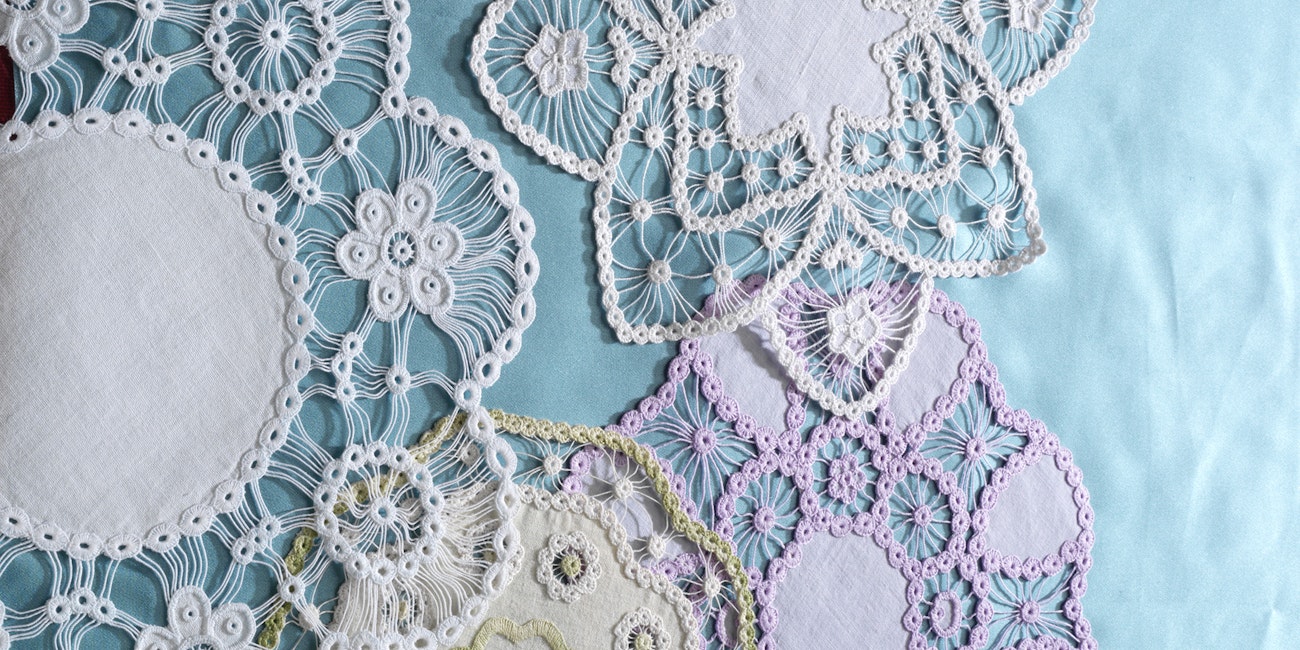 Doilies worked in a Polish cutwork embroidery technique known as snutki by Peta McMillan, shown in the November/December 2005 issue of PieceWork. Photo by Joe Coca
Doilies worked in a Polish cutwork embroidery technique known as snutki by Peta McMillan, shown in the November/December 2005 issue of PieceWork. Photo by Joe Coca
Once thought of as only something a grandmother could love, doilies are experiencing a renaissance. Unlike quilts and other large textiles that are typically treated as important heirlooms, doilies are generally thought of as impractical “dust collectors.” The stereotype is that doilies covered every surface in musty, overcrowded interiors; they have come to symbolize a premodern, unliberated time. Nevertheless, some individuals are deeply moved by these small pieces of cloth. Many experience a push-pull: they are drawn to these small pieces of cloth but do not want to use them in old ways. Read the full article.
2. The Ancient Craft of Nålbinding Then and Now
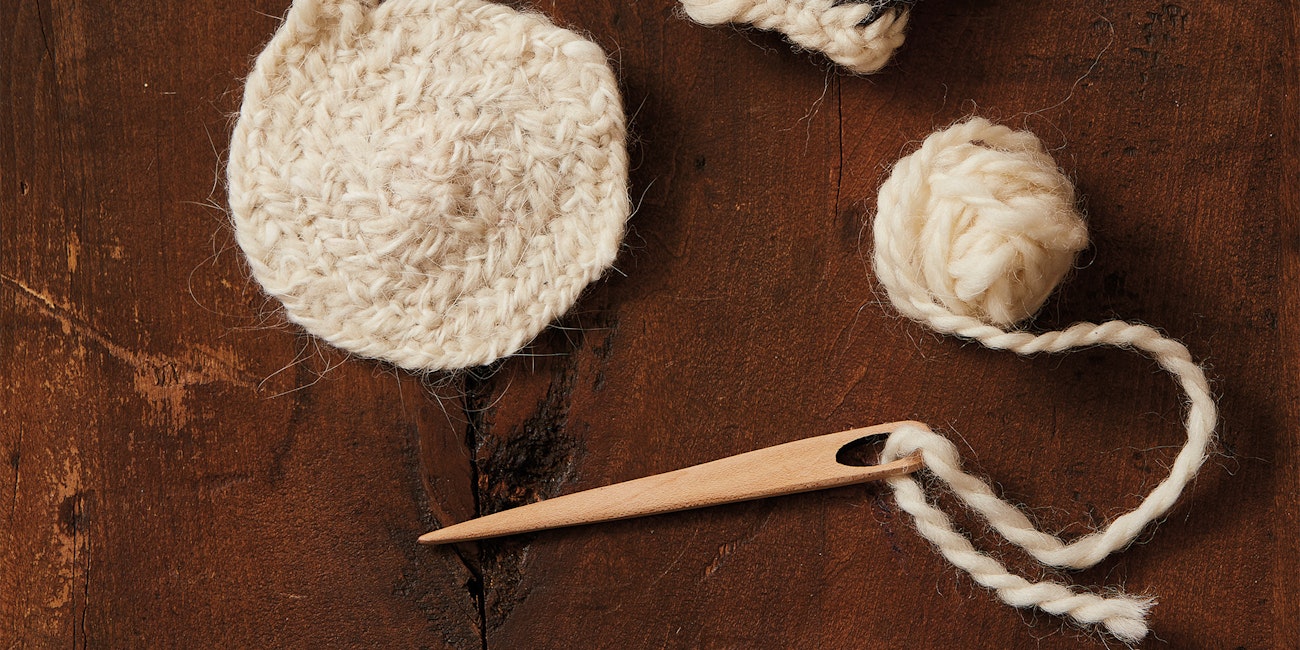 Are you looking for an interesting, ancient technique? Try your hand at nålbinding. Photo by George Boe
Are you looking for an interesting, ancient technique? Try your hand at nålbinding. Photo by George Boe
Are you as curious as we are about nålbinding? This fascinating Scandinavian knotless looped-yarn technique predates knitting and crocheting. It takes its name from the Danish nålbinding (literally translated as needle binding). In this excerpt from Spin Off Summer 2019, Penelope Hemingway shares some of the history of this ancient craft. Read the full article.
1. Why Is the Granny Square Called a Granny Square?
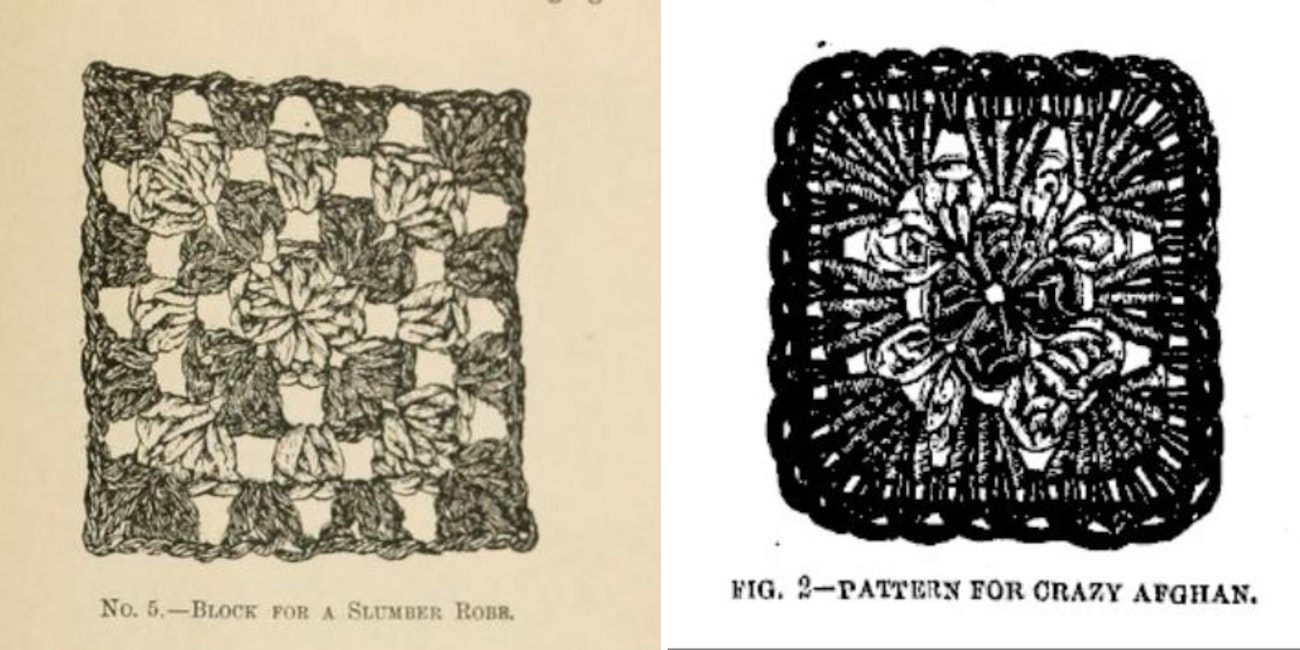 Left: Granny square engraving from The Art of Crocheting, a book on crocheting published in 1891. Right: Granny square design from the April 4, 1885 issue of Prairie Farmer Magazine
Left: Granny square engraving from The Art of Crocheting, a book on crocheting published in 1891. Right: Granny square design from the April 4, 1885 issue of Prairie Farmer Magazine
As a self-avowed crochet granny square obsessive, Marsha Borden often wondered why this crochet motif is called “granny square.” The granny square has been around since the late 1800’s and continues to be popular, delighting modern fashionistas by turning up on catwalks from London to New York. But what is a granny square? Where did it come from, and why is it called a granny square? Read the full article.
We’ve enjoyed working on all the great PieceWork features this year and look forward to bringing even more needlework to you in the coming year.
Cheers!

